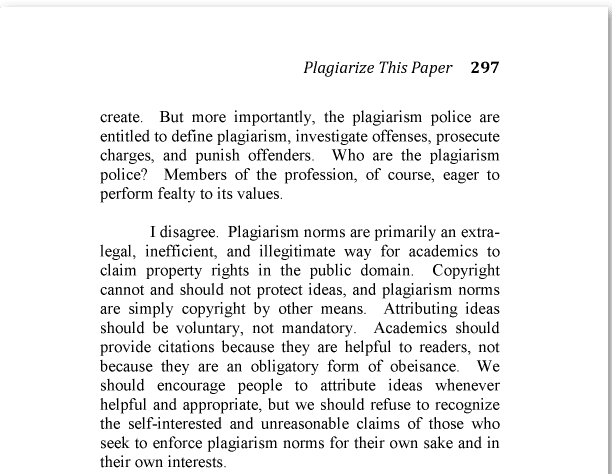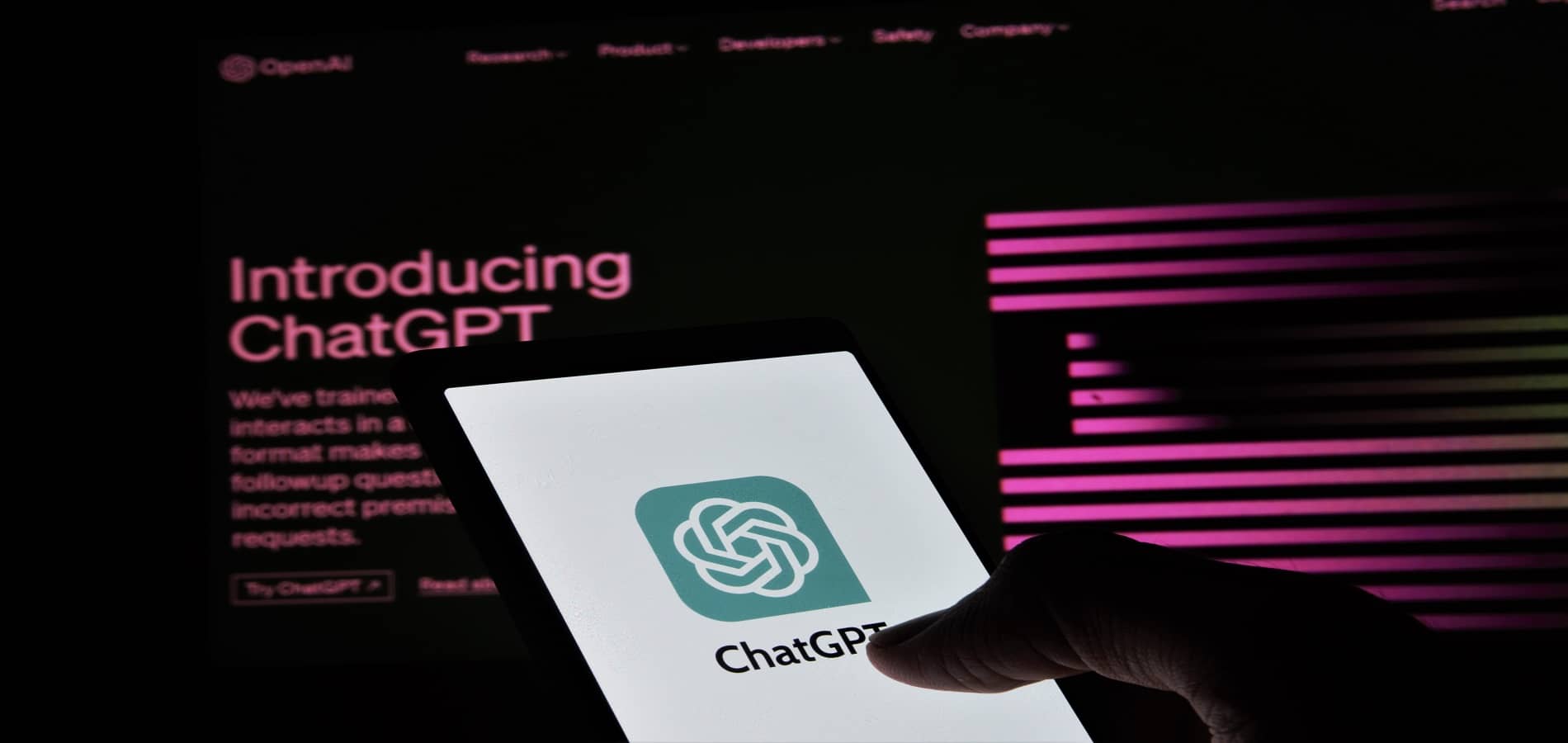It’s October already and, somehow, we are more than a month into a new school year. Last month, we covered ways you can help your students get started on their research projects. For this month’s blog post, we’re going to dive into one of the more difficult, and awkward, challenges faced by university instructors: plagiarism and academic dishonesty. Keep reading for four tips and tricks on helping your students avoid plagiarism in their written assignments!
Many of us have faced this scenario: you’re looking over a student’s essay and you realize, there’s no way they could have written this! The consequences for students in this situation can be severe. Depending on your university’s code of conduct and your department’s policies, plagiarism can result in a student receiving a failing grade on the assignment or in the course, or in other disciplinary measures imposed by the institution. On top of that, when students plagiarize their assignments, it is all but impossible for us to assess their learning in the class.
Plagiarism and academic dishonesty encompass a spectrum of activities ranging from the most egregious, such as a student paying an essay service to write a paper for them, to less dire offenses, such as failing to provide adequate attributions for source material. In this post, we are going to focus on proactive actions that you can take to prevent plagiarism in the classroom before it happens. Keep reading for four tips on preventing plagiarism, and a lesson you can use in your own classroom.
1. Design assignments that discourage plagiarism
Use scaffolding in your assignment design. Scaffolding means breaking assignments up into smaller, more manageable tasks that build upon each other. For example, instead of just assigning students a 5,000-word essay two months in advance, break the work up into a sequence of smaller writing tasks that lead into each other over the course of two months. You can have students first compose an annotated bibliography of sources, followed by a series of drafts leading up to the final revised copy.
The Sweetland Center for Writing at the University of Michigan has some great advice on scaffolding assignments:
The secret to effective writing instruction that integrates with your course content is to move from simple tasks to more complex tasks. Think in stages of skill development, as coaches do when training athletes. For instance, in baseball, players build their skills through batting practice, fielding practice, strength training, agility training, sliding, etc. In general, no one executes a home run before they learn to swing, or build their strength, or learn base-running strategies. It’s the same with writing.
So how does this help prevent plagiarism? In my experience as a university instructor, many students plagiarize writing assignments in moments of last-minute panic (also known as the “Sunday scaries”). Scaffolding and sequencing an assignment has a number of benefits here. First of all, by breaking up a writing assignment into a sequence of manageable tasks, it ensures that students are not starting from zero the night before an assignment is due. They will have at least something written. Second, by helping students build up the skills and confidence they will need to complete the assignment, it makes them more likely to complete it – even if they do find themselves staring down a scary deadline.
2. Meet with your students individually
In addition to my regularly scheduled office hours, I have found it useful to provide students with more structured times to consult with me individually throughout the semester. Typically, I cancel regular classes two weeks per semester, and devote the time to scheduling individual conferences with each of my students. I usually do this around the time that students are turning in their first major writing assignment, and toward the end of the semester when they are working on their final projects. This is helpful in a couple of ways. First of all, it helps me to get acquainted with students as writers – I learn their strengths and weaknesses as writers, and we can collaborate on developing a plan for what writing skills they hope to improve over the course of the semester. Students who feel supported and have growing confidence in their abilities are less likely to resort to plagiarism. The second benefit of holding individual conferences is that it helps us to build a human relationship with each other. Students who feel they are valued and treated with respect by an instructor who cares about them as individuals are less likely to plagiarize.
3. Encourage students to use the anti-plagiarism tools available to them
Many universities subscribe to anti-plagiarism programs, such as Turnitin, or offer them as part their institutional subscriptions to learning management platforms, such as Blackboard SafeAssign. Personally, I don’t use plagiarism-checking platforms except to corroborate cases where I already suspect a student has been less-than-honest about the provenance of their work. However, I do think it is a great idea to encourage students to use plagiarism-detecting software themselves, to check their own work during various stages of the drafting process before they submit their final drafts. Not only does this help students to prevent themselves from inadvertently plagiarizing, but it can also direct their attention to other issues with their writing, such as overreliance on secondary sources in making their argument. Furthermore, this reframes the project of preventing plagiarism as a collaborative process, in which student and instructor are co-participants, rather than a punitive process, in which the instructor disciplines the student after their failure.
HeinOnline also integrates with a number of research management platforms that your students may find useful as they begin their research projects, and which can help to prevent plagiarism before it happens. NoodleTools offers student researchers a platform for organizing citations and synthesizing sources as they research on HeinOnline, and the PowerNotes extension for Chrome enables students to easily annotate sources and organize citations.
4. Teach students how to use sources legitimately
Probably the most important way you can help prevent student plagiarism is to teach students about proper citation practices. Many students think they only need to cite outside sources when they quote from them directly. However, students should be employing proper citation practices whenever they use information from an outside source in their own work – this includes not just direct quotations, but paraphrases and summaries of information as well. Getting students comfortable with using source material in multiple ways is an important part in helping them to avoid plagiarism. HeinOnline provides students with a number of ways to cite sources they find in their research. This blog post provides a useful guide to using citations in HeinOnline.
The following activity is a great way to get students comfortable with using outside sources in a sophisticated, credible, and ethical way. You can have students work on this in class, individually or in small groups, or have them complete it for homework.
Activity: Source Synthesis
Instructions: choose two readings from this semester and find an idea that two of the sources discuss. Fill in the chart below with a quote or paraphrase from one of the readings and a corresponding quote or paraphrase from another reading (don’t forget to include parenthetical citations to show where the information is from). Then indicate whether the two quotes/paraphrases agree, disagree, or build off of one another. Finally, create a short paragraph in which you synthesize the sources together.
I have posted a template below. For this example, I used excerpts from two articles from the HeinOnline Law Journal Library (Access Database | View LibGuide) and Intellectual Property Law Collection (Access Database | View LibGuide): “Self-Plagiarism” by Josh Blackman, and “Plagiarize This Paper” by Bryan L. Frye. (Note: I use MLA style in these citations. Feel free to have your students use whatever style is most appropriate for your class).
| Your Name | Quote/paraphrase from source 1 | Quote/paraphrase from source 2 | Agrees/Disagrees/ Builds on | Paragraph that uses synthesis |
| Dr. Goffeney | “The editors and I were quickly confronted with a series of difficult ethical questions for which there were no clear answers. How much text could be quoted verbatim? How substantially must prior writings be rephrased? Did all analysis have to be novel to the Review? I was struck by how little legal scholars addressed these quandaries that most authors (myself included) took for granted” (Blackman 642). | “Attributing ideas should be voluntary, not mandatory. Academics should provide citations because they are helpful to readers, not because they are an obligatory form of obeisance” (Frye 297). | Builds on | In “Self-Plagiarism,” Josh Blackman describes an interesting scenario: what happens when an author fails to provide adequate citations for their own prior work? That is, what happens when an author plagiarizes themself? As Blackman writes, this raises a “series of difficult ethical questions for which there [are] no clear answers. How much text could be quoted verbatim? How substantially must prior writings be rephrased?” (Blackman 642). Bryan L. Frye addresses these questions head-on in his article “Plagiarize This Paper,” in which he seeks to completely reframe the way that academics approach the issue of plagiarism: “Attributing ideas should be voluntary, not mandatory. Academics should provide citations because they are helpful to readers, not because they are an obligatory form of obeisance” (Frye 297). According to Frye’s model of academic integrity, Blackman’s case of “self-plagiarism” would likely be no problem whatsoever. |
Further Discussion: Secondary Sources on Plagiarism
In addition to working on the mechanics of citing sources, this activity offers a great opportunity for you and your class to discuss the sometimes complicated ethical questions involving academic honesty. There are a number of articles on HeinOnline that would provide good starting points for class discussions about plagiarism and ethical scholarship.

The following articles, selected from HeinOnline’s Law Journal Library and Intellectual Property Law Collection, approach the issue of plagiarism from thought-provoking and challenging perspectives and can be used as the basis for lively in-class discussion:
- “I Wrote This, I Swear!: Protecting the ‘Copyright’ of Fanfiction Writers from the Thievery of Other Fanfiction Writers” by Narisa Bandali
- “Self-Plagiarism” by Josh Blackman
- “Plagiarize This Paper” by Bryan L. Frye
- “Touching Words: Helen Keller, Plagiarism, Authorship” by Jim Swan
Classroom Tip of the Month
Chances are you’re staring down a stack or two of papers to grade right now. Grading papers effectively and efficiently was always one of the most challenging aspects of teaching for me, especially when I first started. I found that things became easier when I reframed my attitude towards my students’ work. When I first started teaching, I approached their writing as if I was their editor: I saw my job as making sure that they produced polished and perfect final products. However, this proved to be overwhelming, for me and for my students. When I spent my time correcting every single mistake on my students’ writing, I would find myself spending up to a half hour on a single essay (which is obviously unsustainable if you’re teaching a 4-4 composition load!). This was likewise a problem for my students, who found themselves overwhelmed, confused, and demoralized when I returned a paper filled margin-to-margin with corrective notes.
Things became easier for me and for my students when I stopped approaching their work as an editor, and started approaching it as a teacher. This means that, instead of trying to correct everything about a student’s draft, I would choose to focus my comments on two or three writing skills that I wanted them to develop during that assignment. When I stopped trying to correct everything, it allowed me to be strategic and limit the amount of comments I had to make on each page. In turn, this made it easier for my students to focus on the most important areas for improvement in their writing. This approach works particularly well if you collaborate on it with your students. Talk to your students early on in the semester about what they see as their greatest strengths and weaknesses as writers, and adapt your written feedback accordingly.
Good luck with midterms! Stay tuned next month for more tips, tricks, and reflections on teaching writing using HeinOnline.



